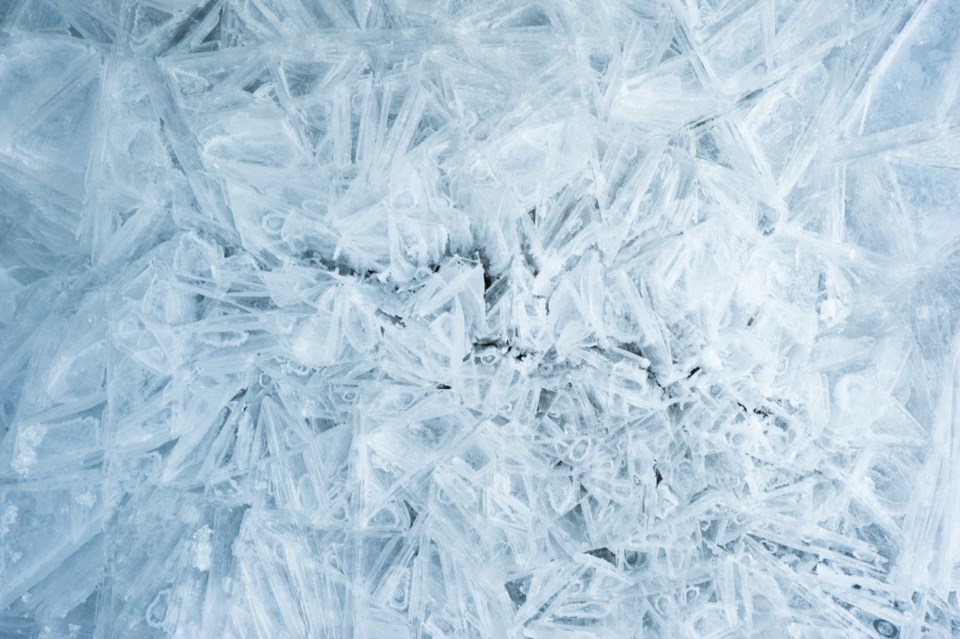Grab another layer: The bone-chilling temperatures Whistler is experiencing thanks to the first “Arctic outflow” of the season are predicted to stick around until Wednesday, Dec. 29.
Environment Canada issued an Arctic Outflow warning for Whistler, as well as the Howe Sound, Metro Vancouver, Fraser Valley, the Southern Gulf Islands, and the Sunshine Coast that remained in effect Monday. The warning advises British Columbians of an Arctic ridge of high pressure over the B.C. interior that’s currently bringing strong and bitterly cold outflow winds to the coastal communities, resulting in “near record cold temperatures early this week.”
According to the weather agency, “Mainland inlets and areas that are exposed to outflow winds are more likely to experience these very cold wind chill values.”
Conditions in Whistler on Monday saw temperatures reach a high of -18 degrees C, with a wind chill of -31 C this morning that rose to -26 C this afternoon. Tuesday’s forecast is looking marginally warmer, with temperatures predicted to top out at minus 13 C, though that will feel more like minus 23 with the wind chill.
The cold first rolled into the region on Christmas Day, when temperatures in the valley hit a high of -8.4 C and a low of -15.7 C.
Those extra layers become even more crucial at higher elevations, where temperatures, according to Whistler Blackcomb, dropped to -24 C at the Roundhouse/Rendezvous elevation Monday.
Environment Canada warns these temperatures can result in frostbite and hypothermia “within minutes” for those heading outside without bundling up and taking adequate precautions.
People are urged to keep exposed skin to a minimum with hats, scarves and mittens or gloves. “Anyone who is not dressed warmly is at risk of frostbite and hypothermia in cold weather,” the warning reads. “Be prepared for unusually cold temperatures and strong winds.”
Most of British Columbia, as well as Saskatchewan and parts of Manitoba and Ontario, are also under extreme cold weather warnings. Public Safety Canada also encouraged those experiencing cold temperatures to make an emergency plan and compile an emergency kit with drinking water, food, medicine, a first-aid kit and a flashlight.
The average high in Whistler on Dec. 27 is -0.8 C, while the average low is -6.7 C. The lowest temperature recorded in the valley on this date since record keeping began in 1976 was -19.2 C in 1996.
Whistler Community Services Society operating emergency warming centre, overnight shelter
The extreme cold weather that’s settled into Whistler and throughout B.C. this week has prompted the Whistler Community Services Society (WCSS), in conjunction with the Resort Municipality of Whistler (RMOW), to implement both a Warming Centre and Emergency Overnight Shelter for anyone in need of a warm place to stay.
Both can be accessed at the Whistler Public library, located at 4329 Main Street.
The Warming Centre will be open from 9 a.m. to 5 p.m., while the Emergency Overnight Shelter will be in operation from 5 p.m. to 9 a.m.
The extreme cold weather services will remain available as long as Environment Canada’s arctic outflow warning remains in place.
WCSS outreach services are available from 9 a.m. to 5 p.m. Monday through Saturday to anyone who needs additional emotional, financial, or mental health support. These services can be accessed by calling 604 932 0113. Those in need of immediate assistance should call the crisis line at 310-6789.
Avalance Canada warns of reverse wind-loading, buried weak layer for Sea to Sky corridor
Amid the continuing Arctic Outflow, Avalanche Canada has forecast a "considerable" danger rating for alpine terrain in the Sea to Sky on Tuesday, Dec. 28, with moderate risk at the treeline and low risk below treeline.
Those heading into the backcountry are encouraged to choose their terrain carefully, to avoid reverse wind-loaded slopes and a buried weak layer. “Seek out softer conditions in wind-sheltered areas,” the current avalanche bulletin advises.
Shifting wind conditions contributed to wind slab avalanches becoming reactive at upper elevations over the weekend, according to Avalanche Canada, while a “concerning weak layer” of facets can be found over the widespread crust that formed earlier this month, and can be found at a depth of about 100 to 200 centimetres in the current snowpack. “This layer has been most reactive at treeline and low alpine elevations, between 1500-2100 [metres],” the bulletin reads. “Large (size 2-3) avalanches have been reported recently on this layer.”
For more details about the area’s current avalanche risk, head to Avalanche Canada’s website.




